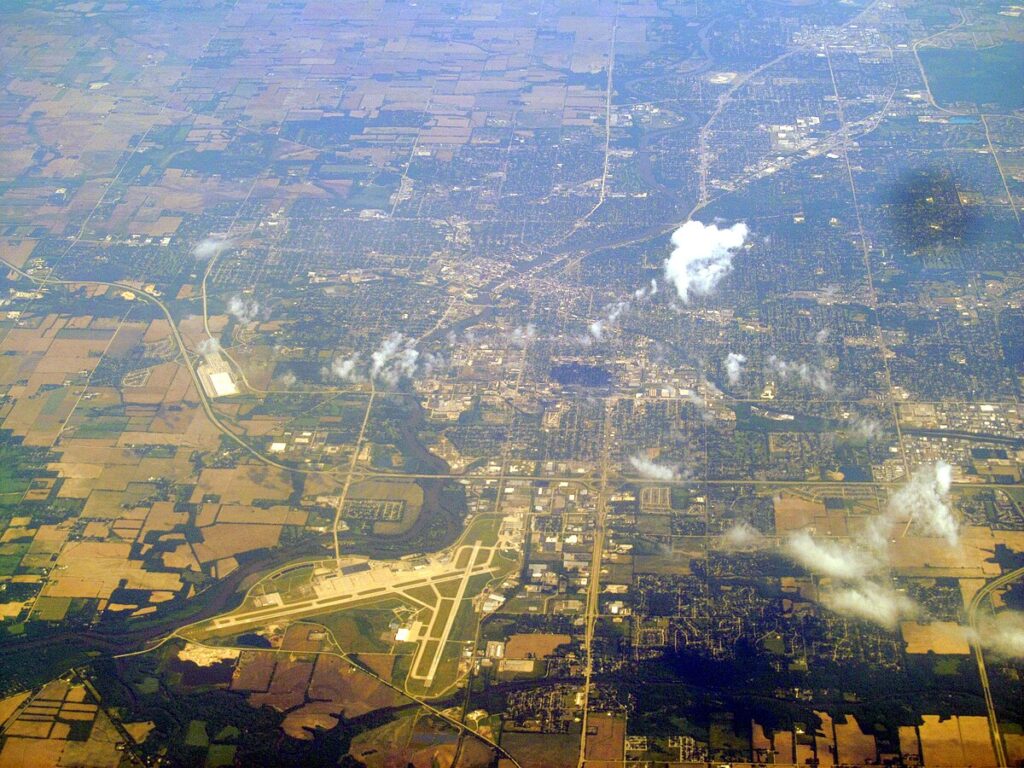
Moving to Rockford, Illinois: A Comprehensive Relocation Guide
Considering moving to Rockford, Illinois? Sitting on the Rock River about 85 miles northwest of Chicago and near the Wisconsin state line, Rockford blends Midwestern value, manufacturing heritage, and expanding healthcare and aerospace sectors. This 2025 relocation guide explains neighborhoods, costs, jobs, education, recreation, and transportation so you can decide if moving to Rockford IL is right for you.
Demographic Profile to Consider If Moving to Rockford:
Rockford is the largest city in northern Illinois outside the Chicago metro, with a city population around 145,000 and a metro topping 340,000. Neighborhoods range from historic homes near the river and downtown lofts to family subdivisions on the northeast and southwest sides. The community is diverse and proud of its maker DNA—machine tools, fasteners, and aerospace components are part of local identity—while arts institutions and an active parks system add balance. Find trusted local services for moving, living, and working in Rockford.Rockford Relocation Directory
Rockford’s civic core has seen steady reinvestment. Downtown now mixes apartments, breweries, and entertainment at venues like the Coronado Performing Arts Center and BMO Center. Signature attractions such as Anderson Japanese Gardens, Nicholas Conservatory & Gardens, and Sinnissippi Park enhance the city’s riverfront setting.
Cost of Living to Consider If Moving to Rockford:
In 2025, Rockford remains one of Illinois’s most affordable large cities. Median home prices and rents are well below Chicago and many peer metros, giving first-time buyers and move-up households more space for the dollar. Utility costs are typical for the Upper Midwest, and property taxes vary by township and school district; many buyers compare neighborhoods carefully to match budget and school priorities.
Housing options range from classic bungalows and brick four-squares to new builds on the metro fringe. Older homes can offer exceptional value but may require renovation; newer subdivisions provide modern layouts and larger lots. Overall, moving to Rockford IL appeals to cost-conscious professionals, remote workers, and families seeking attainable homeownership.
Economy and Job Market:
The Rockford area’s economy is anchored by advanced manufacturing, aerospace, healthcare, logistics, and education. Household-name employers and suppliers include Woodward, Inc. (aerospace/industrial systems), Collins Aerospace operations, and a strong network of precision manufacturers and machine shops. The healthcare sector is led by UW Health SwedishAmerican, OSF Saint Anthony Medical Center, and Mercyhealth’s regional facilities.
Chicago Rockford International Airport (RFD) has grown into a significant cargo hub, supporting logistics and e-commerce jobs. Many residents also work in professional services, construction trades, retail, and public sector roles with the City of Rockford, Winnebago County, and Rockford Public Schools (District 205). Hybrid and remote arrangements let some professionals live in Rockford while consulting for firms in Chicago, Madison, or nationwide.
Education:
Rockford Public Schools, District 205, operates neighborhood schools, magnets, and career-focused academies. Families also find a range of charter and private options. For higher education, Rock Valley College offers transfer degrees, workforce training, and technical pathways—including aviation maintenance. Rockford University provides liberal arts and professional programs, while Northern Illinois University in DeKalb and UW-Madison (just over the border) expand four-year and graduate choices.
Education in Rockford has a practical, career-linked emphasis. Dual-credit and apprenticeship partnerships connect students with local manufacturers, hospitals, and logistics providers—useful for newcomers interested in upskilling or career pivots.
Recreation and Lifestyle:
With more than 10,000 acres of parks and forest preserves in the region, outdoor recreation is a year-round draw. Rock Cut State Park (northeast of the city) offers hiking, mountain biking, paddling, and camping. Along the river, Sinnissippi Park and the multi-use path enable cycling and running with skyline and water views.
The arts scene includes the Coronado Performing Arts Center, Rockford Art Museum, and community theaters. Families appreciate the Discovery Center Museum and Burpee Museum of Natural History (home of the famous T. rex juvenile “Jane”). Dining spans classic supper clubs, new breweries, and global cuisines. Weekend trips are easy to Madison, Galena, and Chicago for larger events and pro sports.
Healthcare and Services:
Three major systems—UW Health SwedishAmerican, OSF HealthCare (Saint Anthony Medical Center), and Mercyhealth—provide comprehensive care, from emergency services and specialized surgery to women’s health and pediatrics. Numerous urgent care clinics and specialty practices dot the metro, and academic medical centers in Madison and Chicago are reachable for advanced procedures.
Transportation:
Rockford sits at the crossroads of I-90 and I-39 with US-20 encircling the city—useful for commuting across the metro or to the suburbs of Chicago. Chicago Rockford International Airport (RFD) offers passenger service seasonally and robust cargo operations. Local buses are operated by the Rockford Mass Transit District (RMTD), with routes linking downtown, campuses, hospitals, and retail corridors. Many commuters drive, but neighborhoods near downtown and the riverfront offer increasingly walkable and bikeable options.
Conclusion:
Moving to Rockford, Illinois in 2025 means combining Midwestern affordability with genuine industry, strong healthcare, and abundant parks. Whether you’re drawn by advanced manufacturing and aerospace roles, value-driven housing, or riverfront recreation, Rockford provides a practical, family-friendly base with easy access to Chicago, Madison, and the broader Upper Midwest. For many, moving to Rockford IL delivers room to grow without sacrificing amenities or opportunity.

